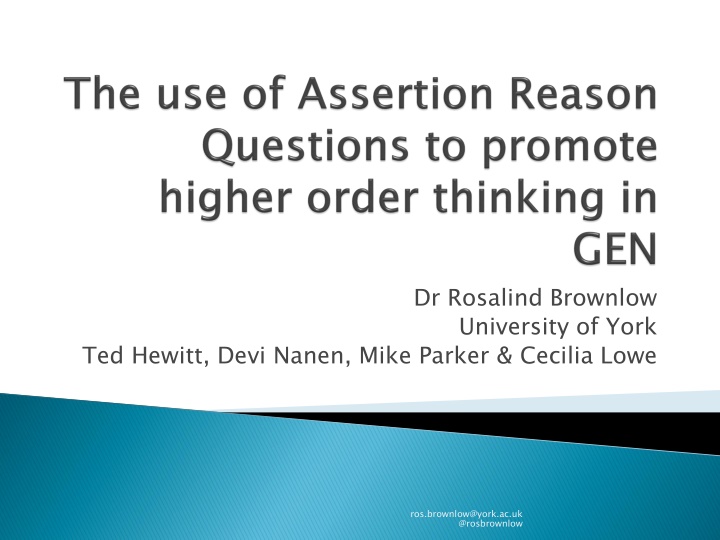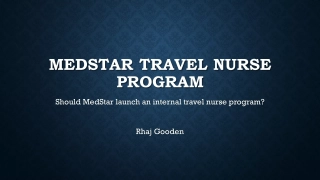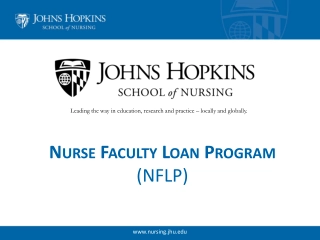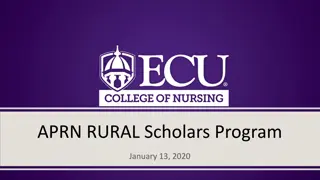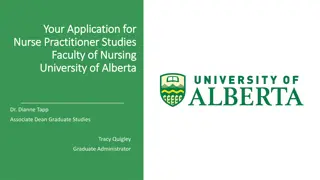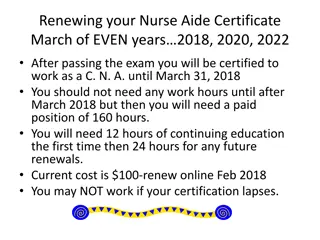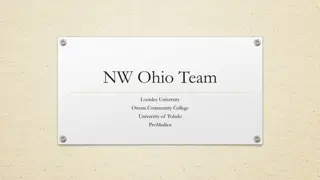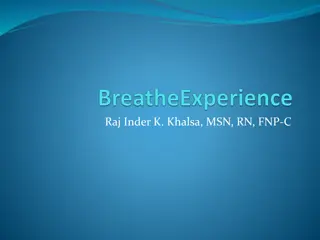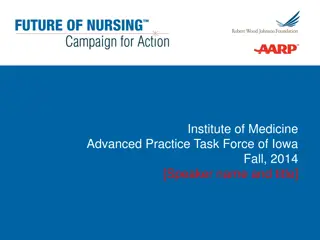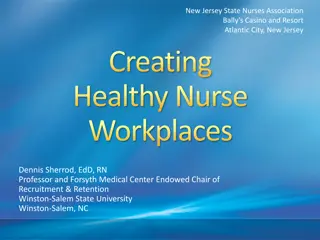Challenging Traditional Learning Methods in Nurse Education
This material discusses innovative approaches to curriculum design in nursing education, emphasizing the need for promoting critical thinking and deep learning through the adoption of Assertion-Reason Questions (ARQs) for assessments.
Download Presentation

Please find below an Image/Link to download the presentation.
The content on the website is provided AS IS for your information and personal use only. It may not be sold, licensed, or shared on other websites without obtaining consent from the author.If you encounter any issues during the download, it is possible that the publisher has removed the file from their server.
You are allowed to download the files provided on this website for personal or commercial use, subject to the condition that they are used lawfully. All files are the property of their respective owners.
The content on the website is provided AS IS for your information and personal use only. It may not be sold, licensed, or shared on other websites without obtaining consent from the author.
E N D
Presentation Transcript
Dr Rosalind Brownlow University of York Ted Hewitt, Devi Nanen, Mike Parker & Cecilia Lowe ros.brownlow@york.ac.uk @rosbrownlow
GEN challenge the traditional methods of learning and teaching in nurse education (Koch et al 2011) GEN students need a curriculum that is challenging and stimulating (Halkett and Mcafferty (2006) GEN students need a curriculum that promotes higher order thinking (McGarry el al 2011) GEN students need a curriculum that challenge them to reach their full potential (Cangelosi 2007) ros.brownlow@york.ac.uk @rosbrownlow
Knowledge of applied life sciences in undergraduate pre- registration nursing programmes within the department is normally assessed by Multiple Choice Questionnaires and short answer questions. These methods of assessment have been criticised in the literature for their limited capacity to represent real world situations authentically and promote higher order thinking. Assertion-Reason Questions (ARQs) are promoted in the literature as an alternative approach which encourages higher order thinking and promotes deep learning. The PG Diploma with Professional Registration in Nursing team were seeking an approach to closed examinations that enhances learners critical thinking and promotes deep learning ros.brownlow@york.ac.uk @rosbrownlow
To adopt ARQs as the method of formative and summative assessment of applied life sciences to enhance the critical thinking of learners engaged in the programme and promote deep learning associated with a post graduate level of study. Evaluation through analysis of results post assessment survey of students ros.brownlow@york.ac.uk @rosbrownlow
An assertion-reason question combines the elements of multiple-choice and true/false question types This allows for the testing of more complicated issues and requires a higher level of learning Assertion-reason questions can be used to explore cause and effect and identify relationships ros.brownlow@york.ac.uk @rosbrownlow
The question consists of two statements: an assertion and a reason The student must first determine whether each statement is true, then determine whether the reasons correctly explains the assertion There is one option for each possible outcome ros.brownlow@york.ac.uk @rosbrownlow
ros.brownlow@york.ac.uk @rosbrownlow
Read both sentences to see if they are correct or incorrect. If you identify an incorrect statement options A&B can be excluded so only the last 3 options need to be considered If the assertion is wrong choose option C If the reason is wrong choose option D If both the assertion and the reason are wrong choose option E ros.brownlow@york.ac.uk @rosbrownlow
If both the assertion and the reason statements are correct then you need to choose between option A and B. This is the most confusing part for students. One way to think of it assertion statement is true because reason statement If this makes sense then option A is correct If not, then its option B. It can help to write the statements out. ros.brownlow@york.ac.uk @rosbrownlow
ros.brownlow@york.ac.uk @rosbrownlow
ros.brownlow@york.ac.uk @rosbrownlow
ARQs test 2 facts and the relationship between them. ARQs cover a lot of content in a single question ARQs aim to promote higher level thinking by testing understanding as well as knowledge ros.brownlow@york.ac.uk @rosbrownlow
ARQs have a good backwash effect i.e. they promote active study ARQs promote higher order thinking success rate in exam was high ARQs challenging but efficient to write same stem for 5 responses Students perception of benefits? Awaiting results of survey. ros.brownlow@york.ac.uk @rosbrownlow
www.york.ac.uk/rosbrownlow ros.brownlow@york.ac.uk @rosbrownlow
